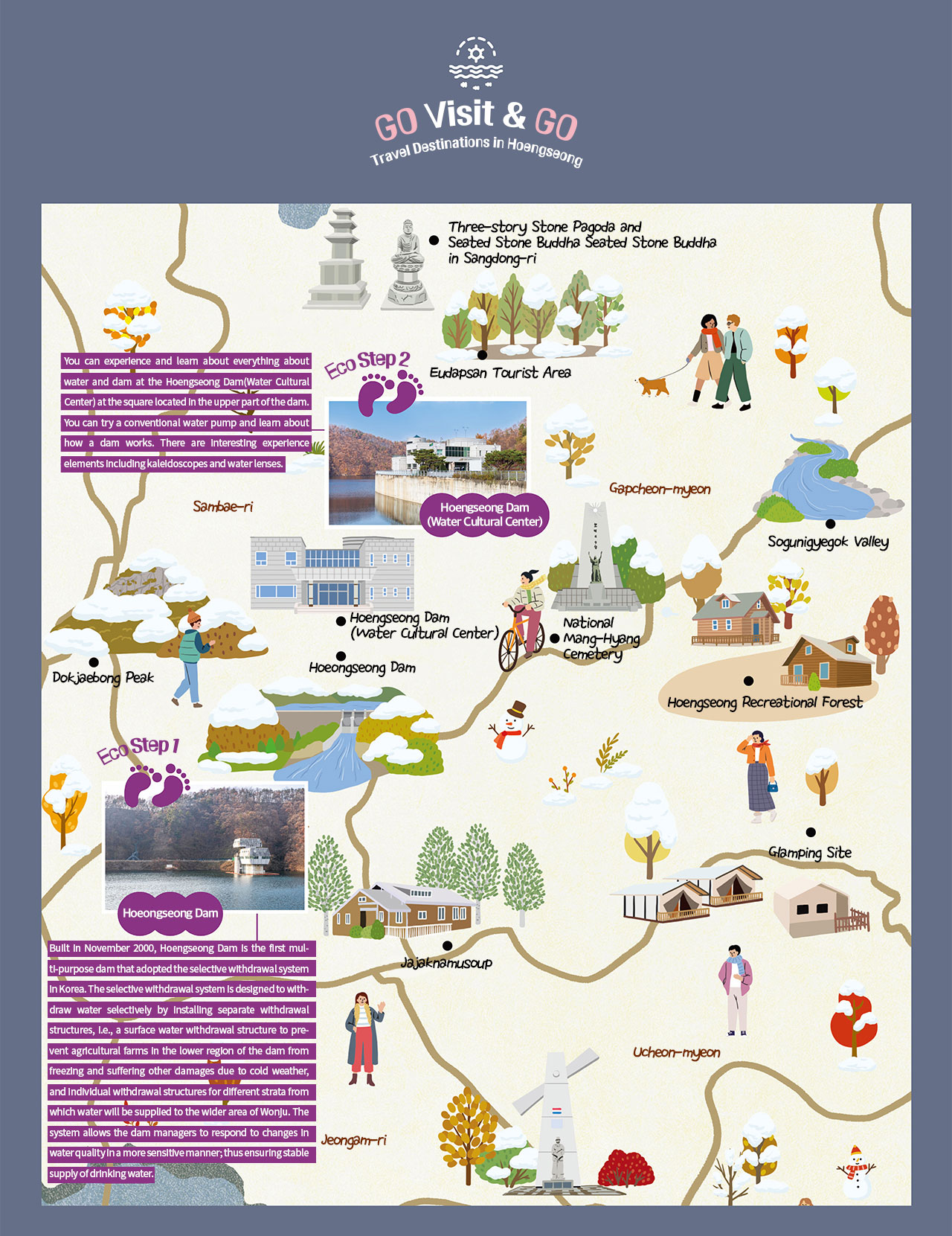-
 2022. December VOL. 657
2022. December VOL. 657
Anywhere you go, you will find the landscape rather boring by this time of the year. Hoengseong is no exception in this regard. Mountains and waters have all shed their fancy clothes, revealing their naked faces.
Winter frosts may bloom like flowers, and snowflakes may create a stunning spectacle at times, but a winter landscape generally looks lonely and gloomy as it bares all its parts in achromatic colors. Still, there is a winter travel destination that shines and sparkles even without snow or frost blossoms. It is Hoengseong Lake, which nestles snuggly at the center of Hoengseong. Built in 2000 when Hoengseong Dam was constructed, the lake is small in size but offers many scenic views. The highlight is the beautiful reflections on the surface of the lake that embrace big mountains in its bosom. The lake’s surface is so mirror-smooth that even winds can sit and rest on it. It is so peaceful and quiet that you may have the words “hustle and bustle” deleted from your vocabulary while you are watching the lake.
The multi-purpose dam is located in Daegwndae-ri, Gapcheon-myeon and is 48.5m tall and 205m long. Capable of storing more than 90 million tons, the dam performs multiple roles including supplying water to Wonju and Hoengseong, serving as a hydroelectric power plant, and controlling water levels in times of floods. You can also take a walk at the top of the dam and the surrounding area, which is worth a try.
Hoengseonghosugil Trail Section 1 that runs along the lake includes the 2.5km section that starts from the top of the dam, runs through the Octagonal Pavilion, Surim Park, and Water Culture Museum, and leads back to the top of the dam, which takes about an hour. You can enjoy scenic views of the lake while walking on the trail.
Sometimes, a lake becomes even more special in winter. It takes on special and unique colors at dawn and becomes mysterious as it reveals its true colors, and Podongseupji Wetland in the upper region of Hoengseong Lake is exactly that. It is a natural wetland formed on a vast area between Podong 1-ri and Podong 2-ri. Water plants including willow trees and reeds grow densely in the wetland, which has recently been selected by the Ministry of Environment as one of the best wetlands in Korea.
On a winter morning with temperatures fluctuating steeply from day to night like these days, the lake gets covered in magical, white wet fog, making it ‘look like a forest or a lake’. The fog is thin over some parts of the lake and thick over others, creating an enchanting scene. When the temperature suddenly drops far below zero at dawn, the wet fog sticks to tree branches and freezes into sparkling frost flowers. If you choose to walk along the small trail(Podongri Trail) that surrounds the lake, you can take a closer look at the unique landscape of a wetland. The trail stretches about 2km from Podonggyo Bridge to near Podonggyo Bridge 2. Still unknown to many, it is probably one of the most quiet and hidden spots around Hoengseongho Lake, making it an excellent hiking trail.
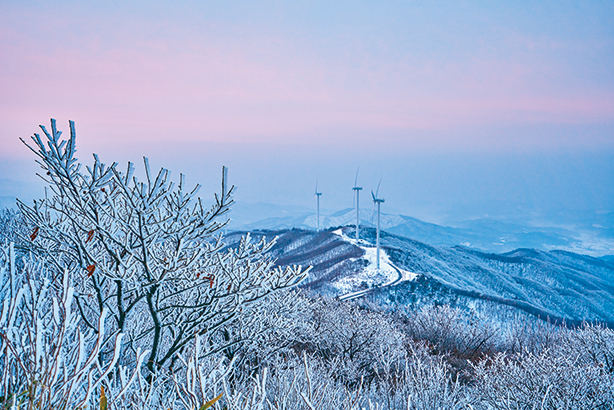

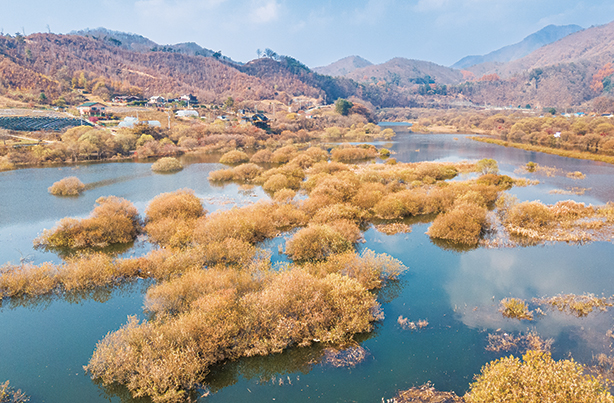

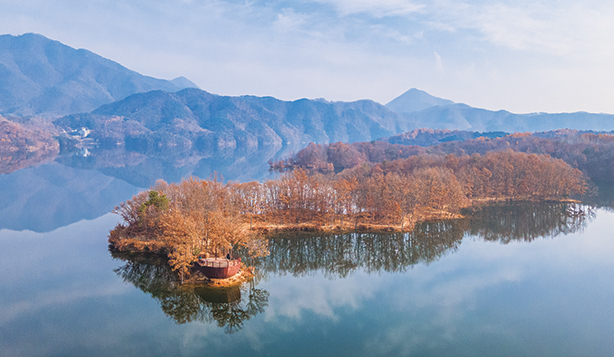
Hoengseongho Lake becomes even more transparent in winter. If you sit and stare into the water, you will be able to see the back fins of big fish, and the lake clearly reveals the highs and lows of its bottom. With little winds blowing over the lake, the crystal-clear water makes the lake’s surface look as transparent as a mirror. So it looks as if the lake were filled with mountains that vary in sizes and heights. Looking into the clear water, you may mistakenly think that mountains and trees grow from inside the lake. A spectacular landscape of mountains and valleys reflected on the water surface glitters from sunset to mid-day. This is why the lake is still so beautiful even in winter.
There is another way to enjoy an equally fascinating scenery near the lake: walking along the Hoengseonghosugil Trail. The trail, which was opened in the fall of 2011, consists of six sections 31.5km long in all. Section 3 that is 1.5km is the shortest, and it takes about an hour, and Section 5 that stretches 9km is the longest, taking about 3 hours. Section 5 made up of Course A and B is the most popular. It is the easiest of the 6 sections and the only section that brings you back to where you start. The trail runs along right next to the lake, which makes it even more attractive and enjoyable like icing on the cake. Lakefront trails generally run along the edge of a lake, but Course B of Section 5 is unique since it winds across the lake. As the trail twists and turns, the landscape unfolds before your eyes as if it were winding, too. As you walk along this long and winding trail, you can get totally lost in ‘your own thoughts’ just like when staring at a bonfire, which is commonly known as ‘bul-meong’ in Korea meaning staring at the fire absent-mindedly.
You can certainly do ‘mul-meong’ or staring at water absent-mindedly as you walk and enjoy the lake view. During the walk, you need not wonder about where your feet will bring you. Instead, you can concentrate solely on following your heart and searching your soul as you take a slow and lazy stroll.

Numbers speak volumes about the cathedral. It was built in 1907 by Father Jeong Gyu-ha who was the first Korean to be ordained as a priest. It is the 4th catholic church built in Korea and the first in Gangwon-do Province. But forget about the numbers. Pungsuwon Catholic Church is a place for emptying, not for filling. As you spend time under the tall willow tree in front of the main hall or sit on the floor inside the hall, everything looks so empty and still, and you can find rest for your soul. ‘The Path of the Cross’ leading to the Rosary Hill is also a great place for walking because it is nice and quiet.
![]() Address: : 30 Gyeonggang-ro yuhyeon 1-gil Seowon-myeon, Hoengseong-gun, Gangwon-do
Address: : 30 Gyeonggang-ro yuhyeon 1-gil Seowon-myeon, Hoengseong-gun, Gangwon-do
![]() Phone: 033-342-0035
Phone: 033-342-0035
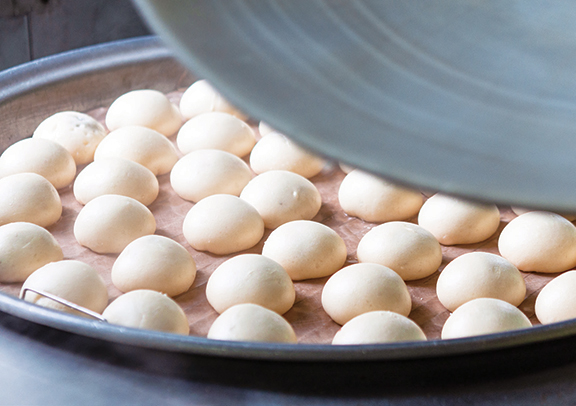
What do you think was the first food item people started to sell in highway service areas? It is Anheung steamed buns. The regional specialty bun has the red bean paste filling made with domestically grown red beans boiled in a large iron cauldron, with no artificial sweeteners. The bread dough for the bun is made with wheat flour and left to rise for a day. As one of Hoengseong’s nationally famous specialty food items, the bun was first made in the 1960s, and an area packed with over 20 shops selling only the bun has become a specialized district in Hoengseong. If you visit Anheung Jjinppang Morak Morak Village, not only can you enjoy the hot steamed buns; you can also make some buns yourself. Prior reservation is required.
![]() Address: 27 Anheung-ro Anheung-myeon, Hoengseong-gun, Gangwon-do
Address: 27 Anheung-ro Anheung-myeon, Hoengseong-gun, Gangwon-do
![]() Phone: 033-340-2703, 2603
Phone: 033-340-2703, 2603
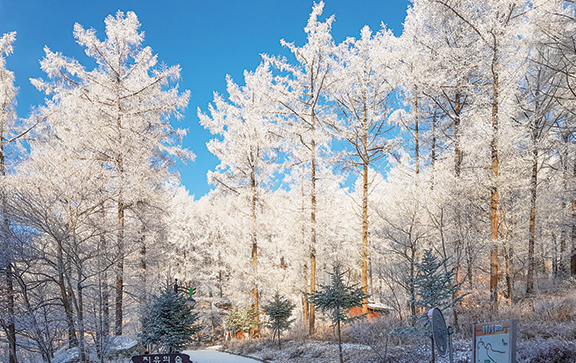
The healing center is located up to the 7/10 level from the foot of Cheongtaesan Mountain. Rising as tall as 850m above sea level, it is known as one of the least polluted and greenest forest education facilities in the country. So it is an ideal place where you can snuggle in the bosom of Mother Nature and breathe in the freshest air. There are about five forest experience courses. The most popular course is ‘Deck Road’, which is 1.4km long. The gently sloped deck is installed along the forest up to 920m above sea level, making it easy and pleasant for anyone to walk on. If you have plenty of time, the programs run by the center are certainly worth joining. Prior reservation is required.
![]() Address: Address: 777 Cheongtaesan-ro Dunnae-myeon, Hoengseong-gun, Gangwon-do
Address: Address: 777 Cheongtaesan-ro Dunnae-myeon, Hoengseong-gun, Gangwon-do
![]() Phone: 033-340-6300
Phone: 033-340-6300
